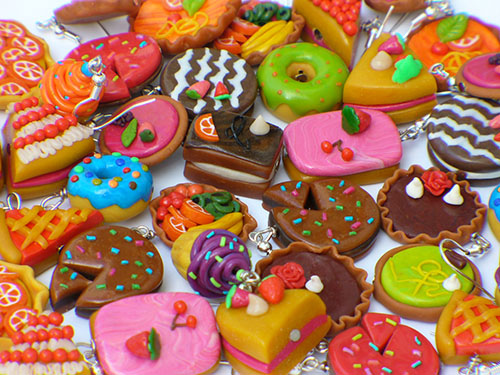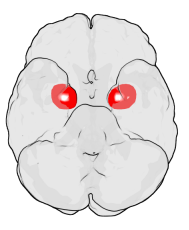Rising Stars - The Brain and the temptation of Cake
Interview with
Emotions colour every part of our lives. They dominate so many aspects of human thought and behaviour yet they still remain a biological enigma. In the past, because of their elusive nature, emotions were never considered worthy of scientific study. So they were generally left to the realms of philosophy. In the last century, catalysed by breakthroughs in brain structure and function, this attitude has changed. Emotion is now a research topic of intense interest. Considering one in six adults suffer from emotional disorders like depression it's never been so important for us to understand the biology of emotions. With a clearer understanding we hope to produce better treatments.
 Here in Cambridge we've been exploring the changes that occur in both our bodies and our brains during positive emotions. For example, if you were to catch a sight or a whiff of your favourite food: let's say a chocolate cake. So far, brain imaging studies have shown that the area that initially responds to emotional triggers like cake is a small arm-shaped structure located deep in the brain called the amygdala. What's the amygdala's role in emotion? Let's say you're walking past a bakery. You see and smell a fresh cake. Despite not even having thought of cake until this point you suddenly really feel like eating cake. It's the amygdala that responds to the cake. The amygdala focuses your attention, subtly affects you heart rate and behaviour and primes your body to get the cake.
Here in Cambridge we've been exploring the changes that occur in both our bodies and our brains during positive emotions. For example, if you were to catch a sight or a whiff of your favourite food: let's say a chocolate cake. So far, brain imaging studies have shown that the area that initially responds to emotional triggers like cake is a small arm-shaped structure located deep in the brain called the amygdala. What's the amygdala's role in emotion? Let's say you're walking past a bakery. You see and smell a fresh cake. Despite not even having thought of cake until this point you suddenly really feel like eating cake. It's the amygdala that responds to the cake. The amygdala focuses your attention, subtly affects you heart rate and behaviour and primes your body to get the cake.
Often, however, these reactions are not appropriate. For example, if you were late for an appointment it wouldn't exactly be the best time to stop and eat cake. In these cases the amygdala responses are overridden by another area of the brain known as the frontal lobe: so-called because it sits at the front of the brain, directly above your eyes. The frontal lobe inhibits and modifies your immediate reactions so you don't waste time getting cake when you're already late for a meeting. It does this by blocking the amygdala's response and so is important in tailoring your behaviour to any given situation.
 But what happens if these two brain regions don't work effectively together? Recent research suggests that unchecked amygdala responses can lead to addictive or compulsive responses as well as depression and schizophrenia. Whilst these observations are interesting it's not yet clear how we can apply them to treatment of such disorders. That's because the way different regions of the brain interact is immensely complex and so reliable results are often slow to come by. We are starting to make headway. With more research we hope to understand not only disordered emotion but what makes and shapes our very different and individual personalities.
But what happens if these two brain regions don't work effectively together? Recent research suggests that unchecked amygdala responses can lead to addictive or compulsive responses as well as depression and schizophrenia. Whilst these observations are interesting it's not yet clear how we can apply them to treatment of such disorders. That's because the way different regions of the brain interact is immensely complex and so reliable results are often slow to come by. We are starting to make headway. With more research we hope to understand not only disordered emotion but what makes and shapes our very different and individual personalities.
- Previous The Blackest Black
- Next Influenza - Flu Facts










Comments
Add a comment